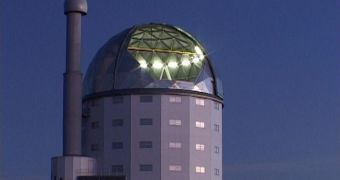A fascinating discussion is currently going on among astronomers, who believe that their field of research may become the first ever to become thoroughly automated within a couple of decades.
If they are right, then this will represent the first time when this singularity is reached. The rate at which machines make discoveries is expected to exceed that of humans within 20 years or so.
By that time, some believe, automated, smart telescopes will be able to take photos, and then edit and catalog data on the fly, before finally downloading them into a Virtual observatory for researchers to analyze.
In this sense, the main job astronomers will have will move away from the traditional ones, of keeping an eye in the skies, establishing targets, conducting surveys, and will rather focus on doing science.
In other words, they will focus more on searching for patterns within the discovered space objects, elaborate new theories based on the findings, and discover the ramifications and implications of seeing objects that defy established norms.
From a theoretical standpoint, this should help the research field progress considerably. This will only be made possible by a new generation of space observatories, capable of operating autonomously.
“In twenty years time, it is likely that most astronomers will never go near a cutting-edge telescope,” believes astronomer Ray Norris.
He holds an appointment at the Commonwealth Scientific and Industrial Research Organization, in Epping, Australia.
Within two decades, “I expect to be able to click on an object in a paper, and see its image at all wavelengths,” the expert goes on to say, quoted by Technology Review.
An added advantage would be that astronomers, with a lot of time on their hands, could finally start engaging with the public, which most of the time are directly responsible for paying their wages.
This in turn could increase public interest into this field, which may result in higher levels of funding for such research.
A promising aspect for automating astronomy is the fact that researcher Hod Lipson at the Cornell University developed a genetic algorithm last year, which is capable of browsing through data looking for the laws of physics behind it.
If unleashed on the Virtual Observatory in which all future telescope will download data, then who knows what the tool might find.
Though still only plans on a piece of paper, the observatories that will enable such studies are a possibility nonetheless, experts add.

 14 DAY TRIAL //
14 DAY TRIAL //